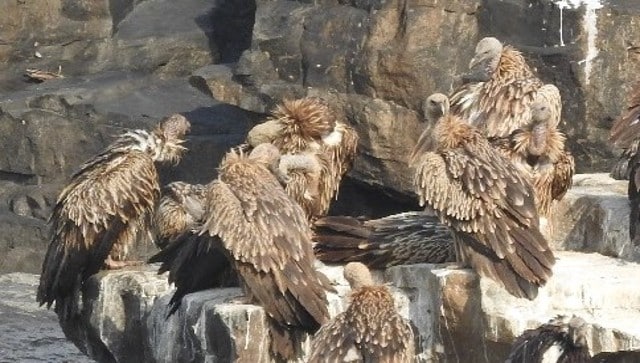The death of vultures in India at an alarming rate has been an issue for quite some time.
The population of the birds in the mid-1990s plummeted to nearly zero – causing alarm for many including conservationists.
But the vulture deaths have had other unintended consequences.
According to a new study, the decline of vultures also led to 500,000 deaths in India.
But why did the vulture population decline so dramatically? And how did it lead to half a million deaths?
Let’s take a closer look:
What happened?
First, let’s take a look at the decline of the vulture.
As per BBC, India’s vulture population began dying off in the 1990s.
This occurred due to India using a drug named diclofenac to treat cattle.
The drug, a non-steroidal painkiller, was cheap.
However, the drug was also deadly to vultures.
The birds, would who would feed on the carcasses of the animals, were left with severe kidney damage.
As per The Times of India, the vulture population declined from 50 million to a few thousand in a decade.
The worst-hit species, the white-rumped vulture, “declined by a dreadful 99.9 per cent between 1992 and 2007,” according to Bird Guides.
India finally banned diclofenac in 2006.
Vultures in Panna Tiger Reserve, Madhya Pradesh.
While that helped vultures recover in some areas, the long-term outlook for vultures remains bleak.
The outlet quoted the latest State of India’s Birds report as showing that at least three Vulture species have lost 91 to 98 per cent of their population.
How did it lead to 500,000 deaths?
Now, according to a new study in the journal of American Economic Association journal, over half a million people died between 2000 and 2005 as a result of the decline in vulture population.
The study also pegged the cost of the health crisis at $70 billion per year.
According to The Times of India, the study was conducted by Anant Sudarshan and Eyal Frank.
Sudarshan is an associate professor at the University of Warwick and senior fellow at EPIC, while Frank is an environmental economist at the University of Chicago.
Sudarshan and Frank looked at health records from over 600 districts.
They overlapped these against maps of historical vulture habitats.
They also examined other variables including water quality and healthcare access, as per the newspaper.
As per BBC, they found an increase in the sale of anti-inflammatory drugs and a spike in death rates of over four per cent in areas where the vulture population had declined.
They also found the greatest spike in deaths occurred in urban areas with large livestock populations and carcass dumps.
‘Nature’s sanitation service’
But why did this happen?
To understand this, you have to examine the roles vultures play in our society when it comes to managing the spread of disease.
As per Science.org, by feeding on disease-filled carcasses, vultures decrease the populations of other scavengers like rabid dogs.
Farmers, without the help of vultures to consume their dead livestock, are forced to dispose of them in waterways – which only further spreads disease.
Sudarshan said he witnessed this firsthand while growing up in India.
He said he saw carcasses of cattle piled up outside tanneries and city limits and dogs and rats feeding on them.
He added that the Indian government mandated tanneries to use chemicals to do away with the waste – thus polluting the waterways.
The authors explained how vultures keep nature in balance.
“Vultures are considered nature’s sanitation service because of the important role they play in removing dead animals that contain bacteria and pathogens from our environment – without them, disease can spread,” Frank told BBC.
“Understanding the role vultures play in human health underscores the importance of protecting wildlife, and not just the cute and cuddly. They all have a job to do in our ecosystems that impacts our lives.”
“The vulture collapse in India provides a particularly stark example of the type of hard-to-reverse and unpredictable costs to humans that can come from the loss of a species,” Sudarshan added.
What do experts say?
Experts are impressed by the paper.
Atheendar Venkataramani, a health economist at the University of Pennsylvania told Science.org that the paper “will be a classic in the field.”
“It’s going to generate a lot of new science.”
Andrea Santangeli, a conservation scientist at the Institute for Mediterranean Studies, said this could spur action on the part of policymakers.
“If you give them flashy figures, it’s probably easier to push forward policy and conservation measures,” Santangeli told Science.org.
Marshall Burke, an environmental economist at Stanford University, said the study could be applicable to other species.
Burke said such approaches might encourage environmental economists to examine other species’ impact on human health.
With inputs from agencies
Images are for reference only.Images and contents gathered automatic from google or 3rd party sources.All rights on the images and contents are with their original owners.



Comments are closed.